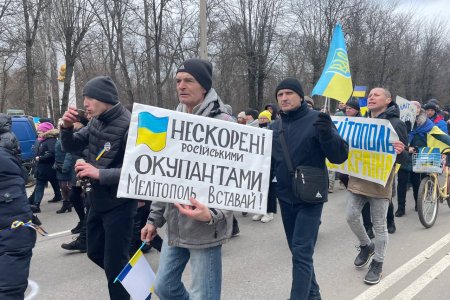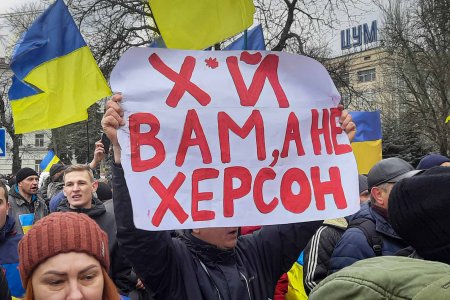
While the Kremlin has, reportedly, issued new instructions on imitating willingness to ‘peace negotiations’, top Russian officials openly indicate that Russia’s plans for Ukraine to disappear as a sovereign state remain unchanged.
The ‘doubt’ expressed by Dmitry Medvedev, former (nominal) Russian president and now deputy head of Russia’s security council, back in June 2022 that Ukraine would even exist “on the world map” in two years has been proven wrong. The hope that it will disappear as a sovereign state remains unchanged, and should be borne in mind by all those seriously proposing that Ukraine engage in ‘peace negotiations’ with the aggressor state currently occupying around 20% of Ukraine’s territory.
On 10 July 2024, Medvedev stated quite unequivocally that Russia should prepare to seize all of Ukrainian territory after the two countries sign a ‘peace deal’. Like Russian leader Vladimir Putin, he does, of course, try to place the blame for this on “radicals” in Ukraine, however the meaning could not be clearer. In his words, even when the current Ukrainian leadership has gone, and “a moderate political regime emerges, that will not be the end of Russia’s military operation. Even having signed the papers and accepted defeat, the remainder of radicals, after a regrouping of forces, will, sooner or later, return to power, inspired by Russia’s western enemies. And it will be time then to finally crush the viper. To thrust a long, steel nail into the coffin of the Bandera-supporting quasi-state. To destroy the remains of its bloody legacy and return the remaining land to the fold of Russian lands.” Medvedev predicts that Russia’s “enemies” will not, even then, disappear, and that Russians “must be ready for further battles for the defence of the Fatherland”.
Worth noting that such predictions about Russia’s readiness to fight further battles, purportedly in defence’, are closely followed by the Baltic Republics and Poland. The latter have been most steadfast in their support for Ukraine and opposition to any form of appeasement to Russia.
On 11 July, Medvedev responded to NATO’s expressed support for Kyiv’s “irreversible path to full Euro-Atlantic integration, including NATO membership”, with one, purportedly, “obvious conclusion. We must do everything so that “Ukraine’s irreversible path to NATO” ends either in the disappearance of Ukraine, or in the disappearance of NATO. And better, of them both.”
There are no grounds for ignoring such comments from one of Putin’s closest allies and the effective head of Russia’s Security Council (the formal head being Putin).
They come a month after Putin himself spoke on 14 June of supposed readiness for a peace settlement’. His conditions: that Ukraine withdraw from the entire Donetsk; Luhansk; Kherson; and Zaporizhzhia oblasts, even those parts that Russia is not occupying; that it fully renounce any hope of joining NATO, and, for full ‘peace’, that all sanctions against Russia are cancelled.
Such a supposed ‘peace offer’ was, rightly condemned by Kyiv and democratic countries. It is, however, very clearly all that the current Russian regime will accept making the pressure for Kyiv to begin such ‘peace negotiations’ from Hungary’s Prime Minister Viktor Orban and, seemingly, from the Republican presidential candidate Donald Trump, of concern.
The Kremlin’s close control over the narrative regarding its war against Ukraine has been seen since 2014, with former employees of state television channels giving accounts of how instructions came from the Kremlin, via top management, even on terms to be used, and adjectives to describe Ukraine’s leaders, etc. All channels’ output was closely synchronized, so that when, for some political reason or other, there were instructions to mellow language, or adapt the narrative, all followed suit.
On 5 July 2024, the Latvia-based publication Meduza reported that the Kremlin had issued new guidelines to the media, instructing propagandists on how to present Putin’s comments at the Shanghai Cooperation Organization summit on 4 July. Instead of the euphemistic term for Russia’s full-scale invasion of Ukraine, namely its so-called ‘special military operation’, the term ‘Ukrainian conflict’ was to be used. The media were to push the line that Russia was not refusing dialogue, but that “Ukraine and the West are speaking the language of ultimatums.” This after the Kremlin demanded that Ukraine simply hand over a vast part of its territory and abandon those Ukrainians living there..
Such cynical distortions should not be dismissed as too obvious to need to be refuted. The fact that the claims do not withstand scrutiny assumes that they will be scrutinized. For those who have a vested interest in ‘peace at all costs’ or proving that their ‘peace plan’ works, propaganda methods, in which it appears to be Russia that is making a ‘peace initiative’ are very likely to be used against Ukraine.



